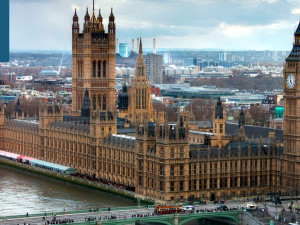
UK households facing bombshell
Morning mid-market rates – The majors
12th August: Highlights
- Household expenditures facing pressure
- Inflation cools very slightly
- Market beginning to understand Weidmann’s point
Interest rate increases set to add to increasing expenditure
This will be a new phenomenon for those who have entered the market over the past ten years or so who have had the luxury of both low interest rates and lenders competing to attract borrowers with fixed rate products.
The next five to ten years are likely to see a turnaround, with banks and building societies being obliged to scrutinize applications from an affordability perspective in a market which is likely to have topped out.
While this will be a relatively slow process, there it will have a significant long-term effect on the housing market, although a scarcity of stock will probably go some way to providing a balance.
Floating rate interest payments for UK borrowers currently totals about £17.5 billion per month. Each 0.25% rise in the rate of interest being charged adds close to a billion pounds to that burden.
The average interest rate on floating rate mortgages is currently 2.29% with the threat of inflation climbing to 4%, it is clear that, over time, that rate could double and still look relatively low historically.
BoE Governor Andrew Bailey constantly bats away concerns over rising inflation, often calling it transitory, but in order for it to fall back to the Government’s 2% target some action will need to be taken.
With the cost of buying your own home likely to rise considerably, the knock-on effect on the greater economy could derail the longer-term prospects for the economy once Covid-19 is consigned to the rear-view mirror.
The risk for today’s release of GDP data for Q2 is clearly to the upside. The consensus view is for the economy to have grown by 4.8% quarter on quarter, with the potential to have actually reached 5%.
This will likely keep the pound well-supported, as it will fuel the expectation that there will be a tightening of monetary policy in the Autumn.
Yesterday, Sterling reached a high of 1.3887, recovering from a low of 1.3802 and closing higher, at 1.3865, ending a run of lower closes.
Considering your next transfer? Log in to compare live quotes today.
No real change expected until taper begins
Although the Fed. doesn’t publish its inflation expectations preferring to describe price increases in general terms, there is no doubt that as the situation regarding logistical bottlenecks and supply shortages improves it is not having anything like the radical effect on inflation that Jerome Powell clearly expects.
In fact, U.S. trade officials have been in contact with OPEC to request they increase supply to ensure that the cost of fuel doesn’t derail the recovery.
With OPEC now an even more politically driven group given the wider range of interests that its members promote, that will be a difficult ask.
The month-on-month rate of inflation rose by 0.4% in July, versus a rise of 0.9% in June.
While a continued fall will bring some relief to consumers who have seen household budgets become stretched, similarly to the UK, rates on home loans are expected to begin to rise as lenders try to get ahead of the curve.
In general, the market for housing finance in the U.S. is more sophisticated than in the UK, so it is possible that rising rates may have a less radical effect.
The passage of the $1trillion Infrastructure Bill through Congress has provided further expectation that the Fed will be forced to act sooner rather than later to cool an economy that is threatening to overhear.
Despite several months of debate regarding the best time for the Central Bank to act, it seems that the decision will be taken out of the FOMC’s hands and circumstances will dictate the timing, as well as the rate, of change.
This will prove that although the situation has been closely monitored, the tightening of monetary policy will be driven by the market and not the Fed.
The dollar index continues to be well-supported but has reached a critical point.
With the euro, which makes up a significant part of the index, bouncing off critical support (see below), the dollar index is struggling to make fresh gains and may lack the impetus to do so at this time which may lead to a period of consolidation.
Yesterday, it fell to a low of 92.79 but recovered to close above the support line at 92.91
Inflation at 3.8%, highest since 1993
With the words of Jen Weidmann ringing in its ears, the ECB is going to be expected to deal with a two-speed recovery it is ill-equipped to solve.
The rate of inflation in Germany in June was 2.3% while in December of last year, prices actually fell.
When taking these statistics into consideration, it is easy to see why there is a growing concern at the Bundesbank about the current level of inflation being transitory.
While Central bankers bandy this word around with something approaching alacrity, there is no real thought being given to how long transitory actually lasts for.
In the case of the Eurozone, the issue is complicated by the fact that monetary policy is decided by the ECB relative to nineteen separate economies, each with its own fiscal policy and budgetary requirements.
Having been firmly tilted towards a strong grip on inflation since its inception in spite of several bumps in the road, the Pandemic has clearly tilted the scale towards a far looser monetary policy which, given the varying pace with which the recovery is taking hold, will lead to differentials that cannot be avoided.
Similarly, it is certain that when the ECB decides it is time for a tightening of policy there will be one or two Eurozone members whose economies suffer, while the effect on the German economy will be for it to see inflation abate. However, the question remains, when will that tightening take place?
As already mentioned, the support for the euro around the years’ low at .1703 remains strong and will require a new driver to be broken. Yesterday, it reached 1.1706, but recovered to close at 1.1739.

About Alan Hill
Alan has been involved in the FX market for more than 25 years and brings a wealth of experience to his content. His knowledge has been gained while trading through some of the most volatile periods of recent history. His commentary relies on an understanding of past events and how they will affect future market performance.”



